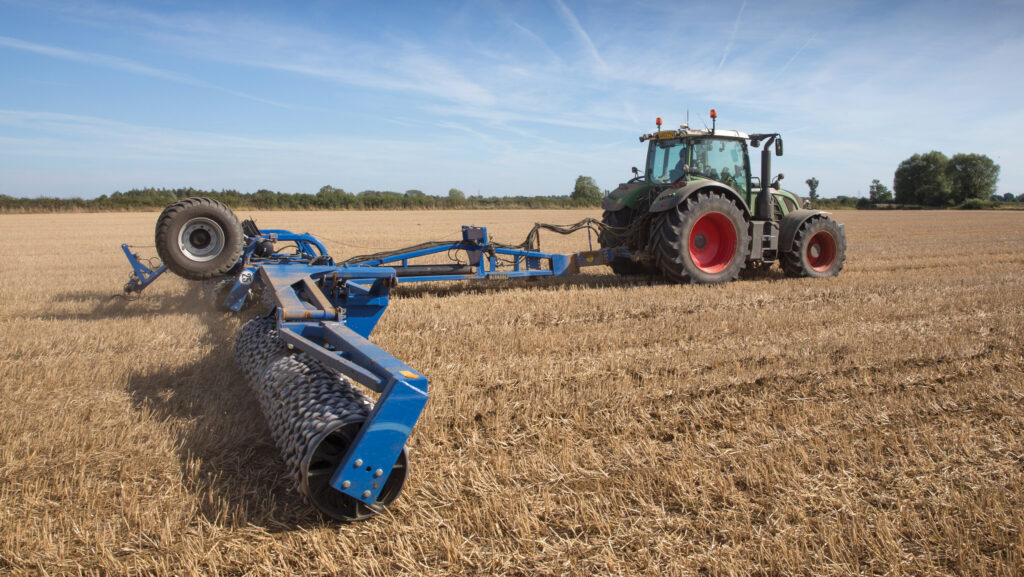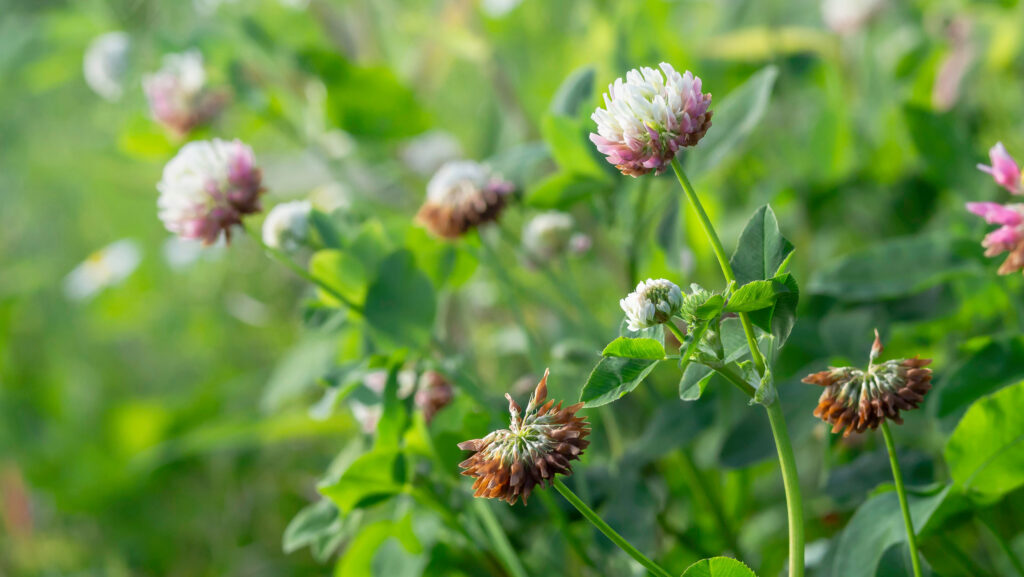How to maximise SFI herbal leys in arable rotations
 © Tim Scrivener
© Tim Scrivener About 175,000ha of SAM3 herbal leys are due to be grown in Sustainable Farming Incentive 2023 (SFI23) schemes, according to the figures released by Defra for agreements reached by the end of March 2023.
While much of this area will likely be on livestock or mixed farms, it could still have a place in arable rotations, especially where growers are looking to integrate livestock and/or rebuild soil fertility and structure.
Potentially, it could be an alternative – albeit less economically attractive – to NUM3 legume fallows, where its greater flexibility to mow and graze could help improve grassweed management.
See also: How to get the most from SAM2 overwinter cover crops
Historically, deep-rooting herbal leys were used to build fertility over several years in arable rotations before termination and a cash crop grown, Cotswold Seeds’ technical manager Sam Lane says.
“Adding livestock got the manure back onto the land to help with that fertility building process.
“Obviously, there are fewer mixed farms and more specialists now, so it is trickier, but a connection with a grazier to provide livestock on a stockless arable unit could provide that.
:The difficult bit is that fencing, and water supply infrastructure, has disappeared on land that might have had them in the past. But there are now lightweight specialist bits of kit that can make it easier.”
Under SFI23 rules, the aim of the herbal ley option is establish a mix of grasses, legumes and herbs to provide varied root structures and areas of flowering plants from late spring through summer.
“The purpose is to produce a high volume of forage with minimal use of inorganic fertiliser, to improve resilience to drought and improve or maintain soil structure, carbon, biology and fertility,” Sam says.
Payments for herbal leys agreed for a SFI23 scheme are £382/ha a year.
Under the rules of SFI23, there is more flexibility around species mix than in Countryside Stewardship GS4, but with rules changing for some options in SFI24, always check the latest guidance, Sam advises.
Species choice
Choosing species will depend on what is the overall aim for the ley, he suggests.
“Some might be using it for forage, others for livestock grazing, while in a stockless arable system it could be chopped or flailed to act as a green manure.
“We’ve also had examples of leys used for anaerobic digestion or more specialist uses such as haylage for the equine industry.”
For example, consider carefully the inclusion of chicory in leys used for silaging, where it can be difficult to manage later in the season (see “Advantages and disadvantages for some key herbal ley species”).
Another key factor is soil type – not all species suit every soil type, Sam says.
“For example, legumes such as lucerne or sainfoin might not grow on medium to heavy soils, while red clover and alsike clover do particularly well on heavy land, so you might include those at a higher level.”
While the option can be rotated annually in SFI23, Sam says herbal leys need to be in the ground for at least two years and preferably the three-year length on agreements to achieve its aims.
Establishment
Seed rates are usually about 25-35kg/ha, and cost anything from £185-£250/ha.
“Ryegrasses are at the cheap end of seed costs, but when you include other species that aren’t used as widely, such as tall fescues and cocksfoot, or the more specialist herbs or legumes, they are produced in lower volumes and are more expensive. But they are the species that make a herbal ley, a herbal ley.”
Establishment in arable systems can be either in spring or post-cereal harvest.
“The key is not too early in the spring and not too late in the autumn.”
In both cases, a warm weather window with moisture will help the ley get off to a good start, particularly the legume species, which are quite dependent on soil temperatures.
“For the most reliable results, a fine-firm seed-bed is key, so light stubble cultivations followed by either very shallow drilling, so no more than 10mm deep, or broadcasting,” Sam advises.
“Then follow with two passes with the roll to get a really firm finish that will lock in moisture.
“Direct-drilling can also work, but you’ve got to be careful of seed-to-soil contact, so the soil must be in the right condition, and shallow drilling depth is critical. It’s about having the drill set right and attention to detail.”
Overseeding
If you are overseeding an existing ley – more likely on mixed or livestock farms – then it should be done when the existing sward is as low and open as possible.
“That might be a field that’s been grazed hard in early spring, after a silage cut in June or July, or traditionally when growth is slowing down in early to mid-autumn.”
Reseeded leys should be ready for an initial light graze around five to six weeks after sowing.
“It’s important not to graze them too hard to avoid damaging some of the more delicate species,” Sam warns.
Where working with an outside grazier, communication about what you are looking for is crucial to make sure animals are managed correctly for the field and overall aims of the ley.
Herbal leys suit mob-grazing principles, where an area is grazed for a short period of time with a higher stock density, before moving the animals on to allow the area to recover, he adds.
“It also helps to focus the amount of manure on the ground.”
Typically, rest periods between grazing on herbal leys should be wider than “traditional” ryegrass-based leys, as you’re looking for the plants to recover.
“You’re probably looking for grazing intervals of at least 35 days during rapid growth and up to 40-50 days depending on time of year and weather, especially in dry conditions.
“From a soil point of view, research suggests the taller a plant is allowed to get with longer rest periods, rooting will be doing something similar.
“So if we want deep roots to improve drainage and soil structure, we want to allow plants to grow taller to express themselves under the surface, too.”
Stockless system
In a stockless system where the ley is being used to help manage grassweeds, silaging before any grassweeds set seed as and when required could be a useful management tool.
Early topping will also help manage any annual weeds before they set seed.
“Where mulching or cutting for silage, set the machine to a cutting height of 6-8cm to protect new seedlings, rather than scalping the ground.”
Most herbal leys in an arable rotation will likely be sprayed off with glyphosate to terminate, before being either lightly cultivated or direct-drilled with a following cash crop.
“With the good they have done to soil structure, it should leave the opportunity for direct-drilling,” Sam concludes.
Advantages and disadvantages of some key herbal ley species
- Chicory Very deep-rooting species, improves drainage and soil structure, and provides beneficial medicinal properties for livestock. But if left uncut after June, it can become woody and stemmy and difficult to manage, especially if using for hay and sometimes wrapped silage bales.
- Alsike clover Some research suggests this species can be detrimental if used in diverse leys destined for the equine market, causing an irritation during intake by horses.

Alsike clover © Adobe Stock
- Red clover A fast-growing, short-term perennial legume, very useful for rapidly fixing nitrogen in warm soils and boosting soil fertility for the next crop.
- Annual clovers (berseem, Persian, crimson clover) These species grow rapidly and help boost soil fertility quickly, but they are short-term species and will fade away after six months, especially if cut or grazed regularly.
- Plantain/ribgrass A very useful, deep-rooting herb that can last a number of years, it is full of nutrients and minerals as well as growing deep roots for soil structure improvement, without the bolting challenge of chicory.
- Sainfoin and lucerne Deep-rooting pasture legumes, which improve soil fertility. However, they are soil-type specific and need free-draining soils with a naturally high pH.

